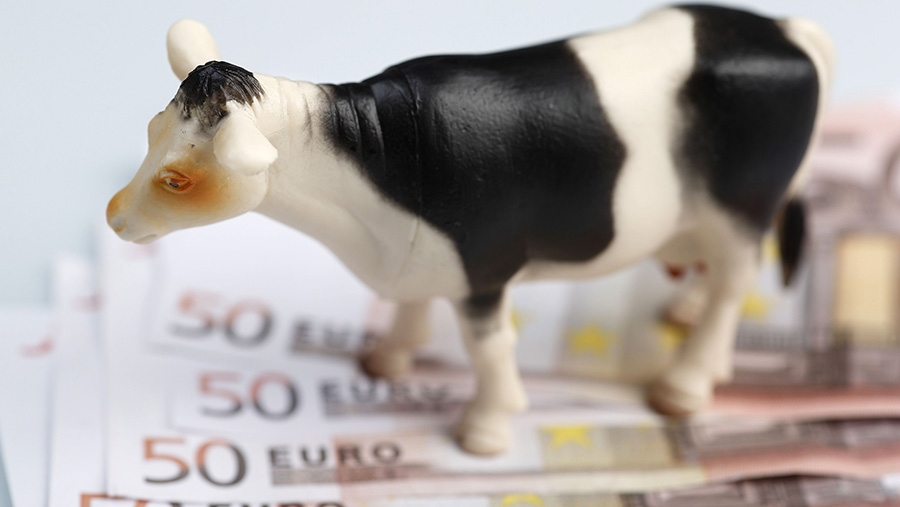Milk price recovery hopes pushed back to 2017
 © Ismo Pekkarinen/REX/Shutterstock
© Ismo Pekkarinen/REX/Shutterstock World dairy markets will not pick up until next year, according to latest forecasts.
Analysts at Dutch financial services firm Rabobank expect the “cripplingly long price trough” to last throughout 2016, with some upward pressure on prices as 2017 begins.
Rabobank has followed other forecasters in pushing back dairy recovery hopes further into the future.
See also: What farmers in other countries get paid for milk
Last month New Zealand co-op Fonterra said it expected farmgate prices to pick up later this year.
Another Kiwi processor, Westland, told shareholders to expect another two seasons of low prices.
The European Commission’s most recent short-term outlook said farmers had to prepare for further milk price falls.
With the exception of Brazil – gripped by the worst recession in a generation – Rabobank sees dairy consumption continuing to grow in Asia, as well as in the US and the EU Kevin Bellamy, global dairy strategist
The main dairy exporting regions were on track to pump out 3.5bn litres more milk this year than they did 2015, but world demand would only grow by 1.5bn litres.
Rabobank’s latest quarterly report forecast the growth in European milk production to slow down, as farmers focused on cutting costs instead of expanding.
But production would not drop, keeping world markets well supplied.
New Zealand’s production in the 2015-2016 season would be higher than first thought, the analysts said, after plenty of rain over the summer.
Australian dairy farmers would also be close to break-even this year, with their margins kept tight.
But Rabobank remained optimistic about long-term prospects, despite the current crisis.
Global dairy strategist Kevin Bellamy said this year’s slowing production growth would be matched by slow, but steady consumption growth around the world.
“With the exception of Brazil – gripped by the worst recession in a generation – Rabobank sees dairy consumption continuing to grow in Asia, as well as in the US and the EU,” he said.
How Rabobank pushed back predictions
- Q1 2014 Global milk prices to ease over the year, but falls limited by structural constraints on suppliers, the need to replenish stocks and demand growth
- Q2 2014 Little improvement in prices until late 2014 or early 2015, as China works through high stocks and world digests “stronger than expected wave of milk”
- Q3 2014 Some “upward price momentum” would return to dairy markets in the second half of 2015, as production slows, China imports again and Russia’s embargo ends
- Q4 2014 The market will gradually tighten in the second half of 2015, but recovery would take some time
- Q1 2015 “Modest upward price pressure” to arrive in the second half of 2015, as lower prices lead to higher consumption
- Q2 2015 Market weakens again with good weather and the end of EU quotas, so dairy recovery pushed back to the second quarter of 2016
- Q3 2015 Rebalancing of the milk market “near at hand”, with prices pushing upwards in the second quarter of 2016
- Q4 2015 Price pressure will still build early in 2016, but recovery will have “somewhat weaker trajectory” than predicted before
- Q1 2016 Dairy markets will remain weak throughout 2016, with more positivity on the turn into 2017
